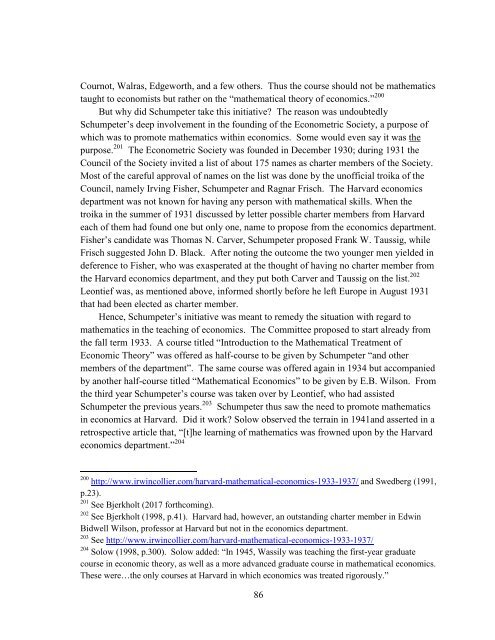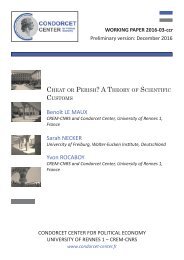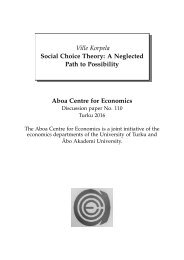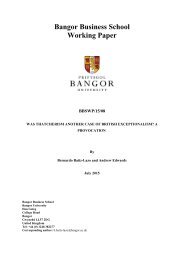MEMORANDUM
n?u=RePEc:hhs:osloec:2016_018&r=hpe
n?u=RePEc:hhs:osloec:2016_018&r=hpe
You also want an ePaper? Increase the reach of your titles
YUMPU automatically turns print PDFs into web optimized ePapers that Google loves.
Cournot, Walras, Edgeworth, and a few others. Thus the course should not be mathematics<br />
taught to economists but rather on the “mathematical theory of economics.” 200<br />
But why did Schumpeter take this initiative? The reason was undoubtedly<br />
Schumpeter’s deep involvement in the founding of the Econometric Society, a purpose of<br />
which was to promote mathematics within economics. Some would even say it was the<br />
purpose. 201 The Econometric Society was founded in December 1930; during 1931 the<br />
Council of the Society invited a list of about 175 names as charter members of the Society.<br />
Most of the careful approval of names on the list was done by the unofficial troika of the<br />
Council, namely Irving Fisher, Schumpeter and Ragnar Frisch. The Harvard economics<br />
department was not known for having any person with mathematical skills. When the<br />
troika in the summer of 1931 discussed by letter possible charter members from Harvard<br />
each of them had found one but only one, name to propose from the economics department.<br />
Fisher’s candidate was Thomas N. Carver, Schumpeter proposed Frank W. Taussig, while<br />
Frisch suggested John D. Black. After noting the outcome the two younger men yielded in<br />
deference to Fisher, who was exasperated at the thought of having no charter member from<br />
the Harvard economics department, and they put both Carver and Taussig on the list. 202<br />
Leontief was, as mentioned above, informed shortly before he left Europe in August 1931<br />
that had been elected as charter member.<br />
Hence, Schumpeter’s initiative was meant to remedy the situation with regard to<br />
mathematics in the teaching of economics. The Committee proposed to start already from<br />
the fall term 1933. A course titled “Introduction to the Mathematical Treatment of<br />
Economic Theory” was offered as half-course to be given by Schumpeter “and other<br />
members of the department”. The same course was offered again in 1934 but accompanied<br />
by another half-course titled “Mathematical Economics” to be given by E.B. Wilson. From<br />
the third year Schumpeter’s course was taken over by Leontief, who had assisted<br />
Schumpeter the previous years. 203 Schumpeter thus saw the need to promote mathematics<br />
in economics at Harvard. Did it work? Solow observed the terrain in 1941and asserted in a<br />
retrospective article that, “[t]he learning of mathematics was frowned upon by the Harvard<br />
economics department.” 204<br />
200 http://www.irwincollier.com/harvard-mathematical-economics-1933-1937/ and Swedberg (1991,<br />
p.23).<br />
201 See Bjerkholt (2017 forthcoming).<br />
202 See Bjerkholt (1998, p.41). Harvard had, however, an outstanding charter member in Edwin<br />
Bidwell Wilson, professor at Harvard but not in the economics department.<br />
203 See http://www.irwincollier.com/harvard-mathematical-economics-1933-1937/<br />
204 Solow (1998, p.300). Solow added: “In 1945, Wassily was teaching the first-year graduate<br />
course in economic theory, as well as a more advanced graduate course in mathematical economics.<br />
These were…the only courses at Harvard in which economics was treated rigorously.”<br />
86





